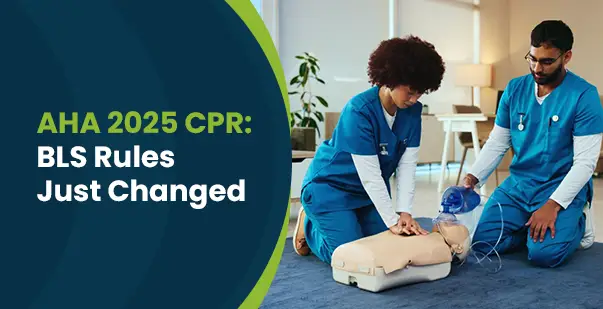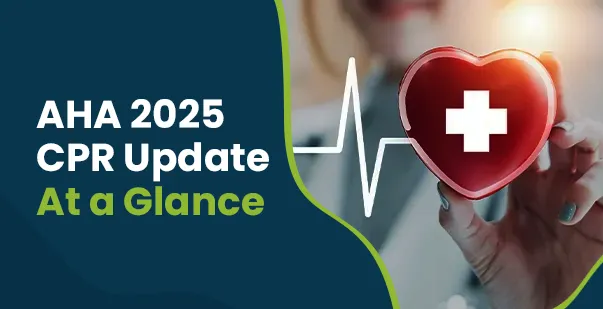When it comes to checking your heart’s health, you might have heard people talk about pulse rate vs heart rate. Even though they sound similar, they’re actually not the same thing.
Pulse rate is the number of times your arteries expand and shrink with each beat, and you can feel it at places like your wrist or neck. Heart rate, though, is how many times your heart beats in one minute, and you usually need special tools like an ECG to check it.
Knowing your pulse rate and heart rate is important. For example, a study with over 66,000 people showed that the average resting heart rate is 79.1 beats per minute, but this number can change depending on age or health.
Therefore, by understanding these two measurements, you can learn a lot about your heart and catch any problems early.
Let’s take a closer look at what pulse rate and heart rate are, how to measure them, and what makes them different.
What is Heart Rate?
Heart rate is how many times your heart beats in a minute. It’s a really important sign of how well your heart is working. It helps pump blood all over your body, bringing oxygen and nutrients to your muscles and organs, and getting rid of waste.
For most adults, a healthy resting heart rate is between 60 and 100 beats per minute (bpm). Athletes might have a lower heart rate because their heart is extra strong and efficient. Factors like exercise, stress, medicine, and your overall health can affect your heart rate. We will discuss it in the coming section.
Checking your heart rate is a great way to see how fit you are and if something’s wrong with your health.
What is the Normal Range Of Heart Rate?
Your resting heart rate is usually between 60 to 100 beats per minute (bpm) when you’re relaxed. But it can change depending on things like how old you are, how fit you are, and how healthy you feel. For example, athletes might have heart rates lower than 60 bpm, sometimes even as low as 40 bpm, because their heart works more efficiently.
On the other hand, if your heart rate is consistently over 100 bpm, which is called tachycardia, it could mean there’s a health problem. If that happens, it’s a good idea to see a doctor.
Check out the table below for resting heart rate ranges based on your age:
| Age Group | Normal Resting Heart Rate (bpm) |
| Newborns (0–1 month) | 100–205 |
| Infants (1–11 months) | 100–180 |
| Toddlers (1–3 years) | 98–140 |
| Preschoolers (3–5 years) | 80–120 |
| School-age children (5–12 years) | 75–118 |
| Adolescents (13–18 years) | 60–100 |
| Adults (18 years and older) | 60–100 |
Note: These values are general guidelines and individual variations may occur.
Checking your resting heart rate often can help you understand how healthy your heart is. If it changes a lot from what’s normal for you, it’s a good idea to talk to a doctor.
Build strong and certified skills
Get certified in Basic Life Support (BLS) with our flexible online course.
Method of Measuring Heart Rate
Checking your heart rate is pretty easy. You can do it by hand or use a gadget. If you want to do it yourself, find your pulse on your wrist or neck.
On your wrist, put your index and middle fingers just below your thumb. On your neck, place your fingers on the side, right under your jaw. Once you feel the beats, count them for 15 seconds, then multiply by four. That gives you your heart rate in beats per minute!
If you want an easier way, try using a heart rate monitor or a fitness tracker. These amazing devices use special sensors to check your pulse and show your heart rate instantly. Some shine light on your skin to track blood flow, while others pick up tiny electrical signals from your heart.
Just remember, these gadgets aren’t always perfect, and sometimes checking it yourself can be more accurate.
Factors Influencing Heart Rate
A lot of things can change how fast or steady your heart beats. Knowing what affects it can really help you take better care of your heart.
1. Physical Activity
When you do things like walk, bike, or dance, your heart needs more oxygen, so it starts beating faster while you exercise and even after.
This faster heartbeat helps send more oxygen to your muscles, making you perform better and last longer.
Exercising regularly helps make your heart stronger, so it works better and keeps you healthier.
2. Emotional States
When you feel stressed, anxious, excited, or scared, your body reacts by kicking in its “fight or flight” system.
This releases hormones like adrenaline that make your heart beat faster. For example, if you’re nervous before speaking in front of a group, you might notice your heart racing.
Even positive emotions like happiness can do the same thing because they make you feel more energized and alert.
3. Body Temperature
When your body temperature goes up, your heart beats faster to help cool you down. But when it’s cold, your heart slows down to keep heat inside. This helps keep your body working the way it should.
4. Medications and Stimulants
Some medications and drinks like caffeine and nicotine can make your heart beat faster. They do this by giving your nervous system a little boost.
On the other hand, some medicines, like beta-blockers, can slow down your heart rate. A few antidepressants, though, might make your heart beat faster.
It’s good to know how these things can affect your heart, since it matters for your overall health.
5. Hormonal Fluctuations
Hormones can really mess with your heart rate. For example, during your period, your estrogen and progesterone levels change, and that can make your heart beat faster or slower.
When you go through menopause and your estrogen drops, your heart might start racing. Thyroid hormones also have an effect on your heart rate.
If your thyroid is working too hard (hyperthyroidism), your heart can beat fast. But if it’s not working enough (hypothyroidism), your heart might beat slowly.
6. Health Conditions
Some health problems can mess with your heart rate:
- Anemia: If you don’t have enough red blood cells, your heart might beat faster to help carry oxygen to your body.
- Hyperthyroidism: When your thyroid is too active, it can make your heart race.
- Dehydration: If you’re dehydrated, your body loses blood volume, and your heart speeds up to keep blood pressure normal.
If you notice your heart racing or other heart problems, it’s a good idea to check in with a doctor.
7. Autonomic Nervous System Activity
The autonomic nervous system (ANS) is in charge of things your body does automatically, like your heart beating. It has two parts:
- Sympathetic Nervous System: This part gets your body ready for action, like when you’re scared or excited, by speeding up your heart rate and giving you more energy.
- Parasympathetic Nervous System: This part helps your body chill out and slow down. It slows your heart rate and saves energy for later.
Both of these systems work together to keep everything in balance.
8. Sleep and Rest
When you sleep, your body does important work like fixing muscles, growing tissues, and making your immune system stronger.
Your heart slows down during this time, which helps your heart stay healthy. Getting enough good sleep is really important for your body and mind.
If your sleep gets messed up, it can make your heart race and cause other problems too.
Training You Can Trust for Real Emergencies
Enroll in BLS Training
What is Pulse Rate?
Pulse rate is how many times your heart beats in a minute. It shows how often your arteries pump blood through your body. You can feel your pulse at places like your wrist or neck, where the arteries are easy to find.
For most adults, a normal resting pulse rate is between 60 and 100 beats per minute. Athletes, however, might have a pulse rate of 40 to 60 beats per minute when they’re resting.
Factors like your age, fitness level, mood, medicines, and overall health can affect your pulse rate.
Keeping track of your pulse can help you understand your heart health and spot any possible issues.
Method of Measuring Pulse Rate
Measuring your pulse rate is a straightforward process that can provide valuable insights into your heart health. Here’s how you can do it:
1. Choose a Measurement Site
In order to check your pulse, you just need to find a spot where an artery is close to the skin. The best places are your wrist, neck, or even the top of your foot.
To feel your wrist pulse, place your index and middle fingers just below your thumb and press lightly until you find the beat. If you’re checking your neck, put your fingers on one side, right below your jaw and next to your windpipe. Press gently, and you should feel it.
These spots work great because they’re easy to reach and give you a good idea of your heart rate.
2. Count the Beats
Once you’ve located your pulse, count the number of beats you feel in 30 seconds.
Multiply this number by two to determine your heart rate in beats per minute (bpm). For example, if you count 40 beats in 30 seconds, your heart rate is 80 bpm.
This method provides a quick and effective way to monitor your heart rate at rest.
3. Consider the Timing
The best time to check your resting heart rate is right after you wake up, before you even get out of bed. This way, your body is still calm, giving you the most accurate reading.
Don’t check it right after working out, when you’re stressed, or if you just had coffee—those can make your heart rate go up.
If you’ve had caffeine, give it at least an hour before checking, since it can make your heart beat faster.
4. Use a Timer
Using a timer makes it super easy to measure your pulse the right way. It helps you count your heartbeats in a set time, like 30 or 60 seconds.
You can use a stopwatch, a clock with a second hand, or even your phone. Just start the timer when you begin counting and stop when time’s up.
If you count for 30 seconds, just double the number to get your beats per minute. Timing it right gives you the most accurate results.
What is the Normal Range of Pulse Rate?
Your heart beats all day, every day—even when you’re just chilling. For most adults, a normal resting heart rate is between 60 and 100 beats per minute (bpm). But this number isn’t the same for everyone.
Factors like age, fitness level, and health can make a big difference. Athletes, for example, often have heart rates lower than 60 bpm—sometimes even as low as 40 bpm. That’s because their hearts are super strong and don’t need to work as hard.
Having a lower heart rate is usually a good thing, but if your heart beats way too fast or too slow, it could mean something’s wrong. If you ever feel dizzy, out of breath, or like you might pass out, it’s best to check in with a doctor.
Here’s a quick look at normal heart rates for different age groups:
| Age Group | Normal Resting Heart Rate (bpm) |
| Newborns (0–1 month) | 100–160 |
| Infants (1–11 months) | 80–160 |
| Children (1–2 years) | 80–130 |
| Children (3–4 years) | 80–120 |
| Children (5–6 years) | 75–115 |
| Children (7–9 years) | 70–110 |
| Children (10 years and older) and Adults | 60–100 |
| Well-trained Adult Athletes | 40–60 |
These ranges are general guidelines; individual variations can occur. For example, a well-trained athlete may have a resting heart rate as low as 40 bpm.
Key Differences Between Heart Rate and Pulse Rate
Heart rate and pulse rate might sound like the same thing, but they’re actually a little different. Knowing how they compare can help you understand your heart health better. Check out this table to see how they stack up.
| Aspect | Heart Rate | Pulse Rate |
| Definition | Number of heartbeats per minute. | Number of arterial pulsations per minute. |
| Measurement Site | Measured internally via electrocardiogram (ECG) or heart rate monitors. | Measured externally at accessible arteries, such as the wrist (radial artery) or neck (carotid artery). |
| Normal Range | 60–100 beats per minute for adults. | Typically mirrors heart rate; variations can occur due to factors like age, fitness level, and health status. |
| Variations | Influenced by physical activity, stress, medications, and health conditions. | Affected by factors such as physical activity, emotions, medications, and health conditions. |
| Clinical Significance | Provides insights into heart function and overall cardiovascular health. | Offers information about arterial health and can indicate circulatory issues. |
Heart rate and pulse rate might seem the same, but they’re a little different. Knowing how they compare helps doctors check heart health better.
When to Seek Medical Advice
Keeping an eye on your heart rate is super important for your health. Normally, an adult’s resting heart rate falls between 60 and 100 beats per minute.
If your heart is beating faster than 100 beats per minute (tachycardia) or slower than 60 (bradycardia) and you’re feeling dizzy, short of breath, or even like you might faint, it’s a good idea to check with a doctor.
For instance, if your heart keeps racing over 100 beats per minute and you feel lightheaded, don’t ignore it—get it checked out.
Take Charge of Your Cardiovascular Health
Knowing your heart rate and pulse rate is super important for keeping track of your heart health. Your heart rate is how many times your heart beats in a minute, while pulse rate is how many times your arteries pulse in a minute. They’re usually the same, but sometimes they might be different because of different reasons. Checking these numbers regularly can help you spot any health problems early. If you notice your heart rate or pulse is too high or too low, or if it feels out of rhythm, it’s a good idea to talk to a doctor to make sure everything’s okay.
FAQs
Is a heart rate the same as a pulse?
No, while both terms refer to the number of beats per minute, heart rate measures the internal rhythm of the heart, and pulse rate refers to the tactile sensation of blood flowing through arteries. They are often the same but can differ in some conditions.
What is a good pulse rate by age?
A healthy pulse rate varies by age. For adults, 60-100 beats per minute (bpm) is normal. Children’s pulse rates can be higher: 70-120 bpm for children aged 6-10, and 80-130 bpm for infants. The rate also depends on fitness level and activity.
What is an unsafe pulse rate?
An unsafe pulse rate is one that is consistently above 100 bpm (tachycardia) or below 60 bpm (bradycardia) when at rest. Either extreme could signal an underlying health condition like arrhythmia, heart disease, or other cardiac issues and warrants medical attention.
What is a normal pulse rate on an oximeter?
A normal pulse rate on an oximeter typically ranges from 60 to 100 beats per minute (bpm) for adults. It may vary depending on activity level, health status, or age. If it falls below 60 bpm or exceeds 100 bpm at rest, it may require medical evaluation.
Read More: Get Discount On CPR and First Aid Certification Online









